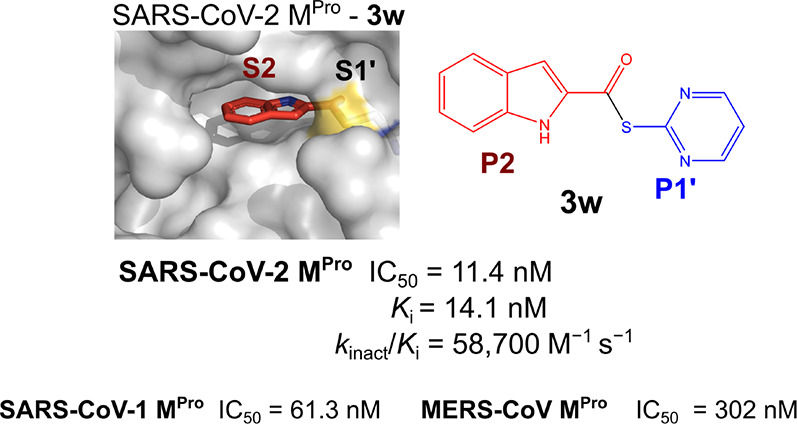- Record: found
- Abstract: found
- Article: not found
Small-Molecule Thioesters as SARS-CoV-2 Main Protease Inhibitors: Enzyme Inhibition, Structure–Activity Relationships, Antiviral Activity, and X-ray Structure Determination

Abstract

The main protease (M pro, 3CL pro) of SARS-CoV-2 is an attractive target in coronaviruses because of its crucial involvement in viral replication and transcription. Here, we report on the design, synthesis, and structure–activity relationships of novel small-molecule thioesters as SARS-CoV-2 M pro inhibitors. Compounds 3w and 3x exhibited excellent SARS-CoV-2 M pro inhibition with k inac/ K i of 58,700 M –1 s –1 ( K i = 0.0141 μM) and 27,200 M –1 s –1 ( K i = 0.0332 μM), respectively. In Calu-3 and Vero76 cells, compounds 3h, 3i, 3l, 3r, 3v, 3w, and 3x displayed antiviral activity in the nanomolar range without host cell toxicity. Co-crystallization of 3w and 3af with SARS-CoV-2 M pro was accomplished, and the X-ray structures showed covalent binding with the catalytic Cys145 residue of the protease. The potent SARS-CoV-2 Mpro inhibitors also inhibited the M pro of other beta-coronaviruses, including SARS-CoV-1 and MERS-CoV, indicating that they might be useful to treat a broader range of coronaviral infections.
Related collections
Most cited references66

- Record: found
- Abstract: found
- Article: found
A pneumonia outbreak associated with a new coronavirus of probable bat origin
- Record: found
- Abstract: found
- Article: not found
Early Transmission Dynamics in Wuhan, China, of Novel Coronavirus–Infected Pneumonia
- Record: found
- Abstract: not found
- Article: not found